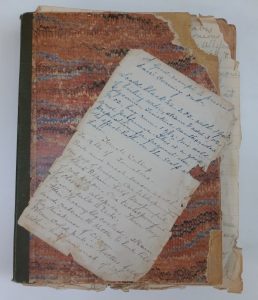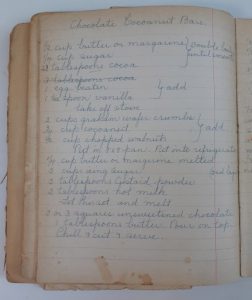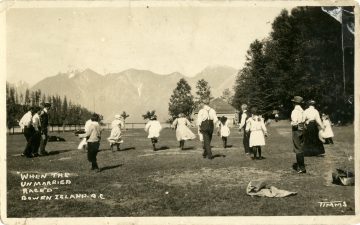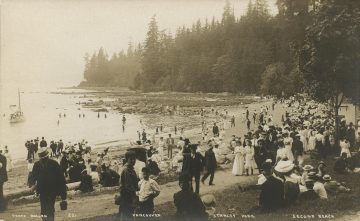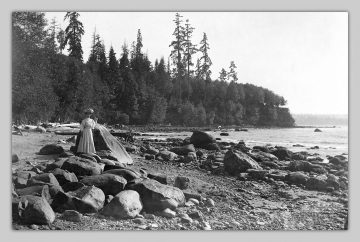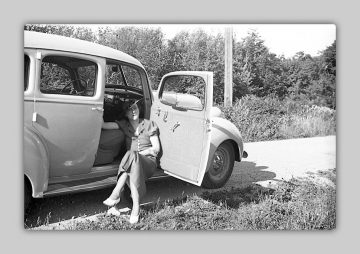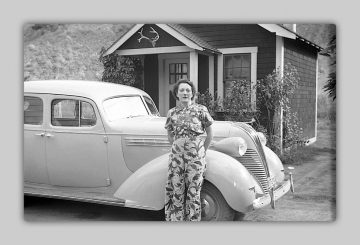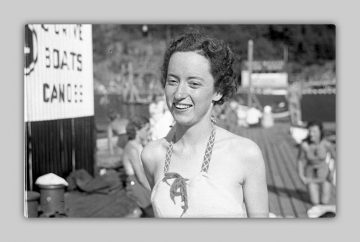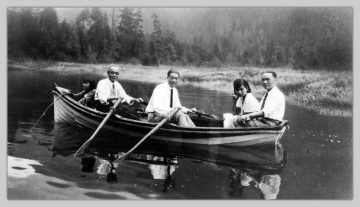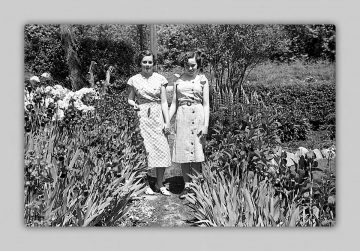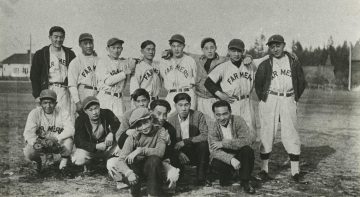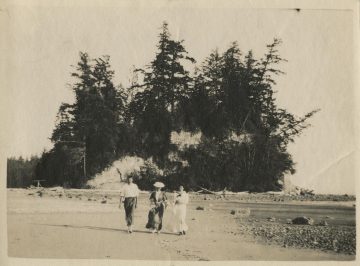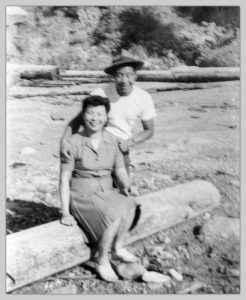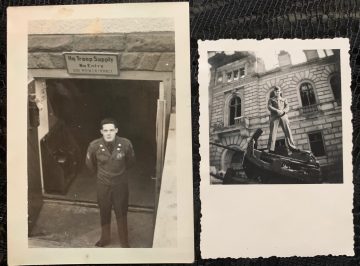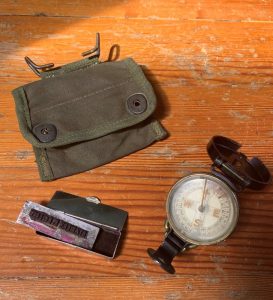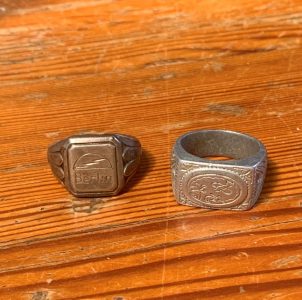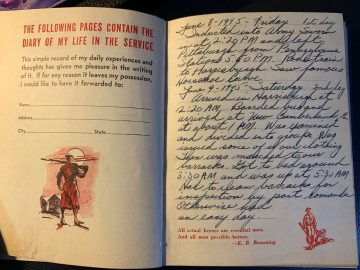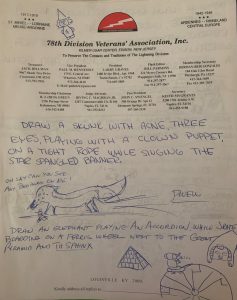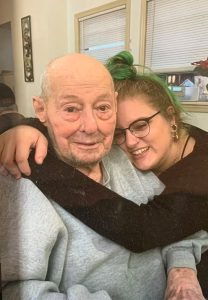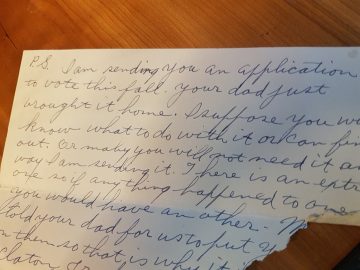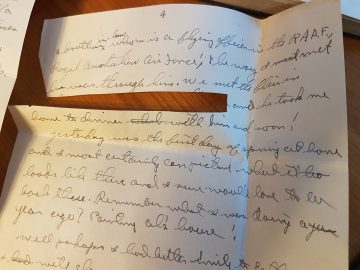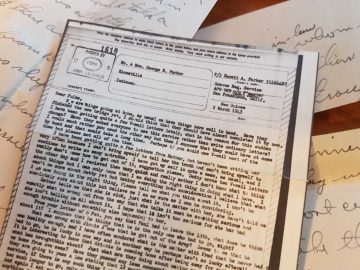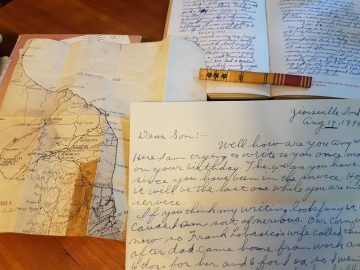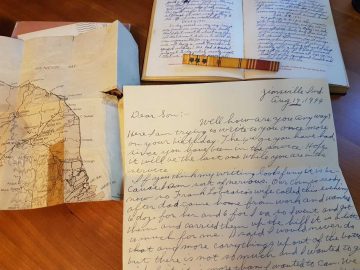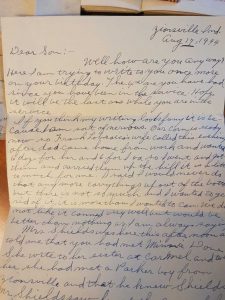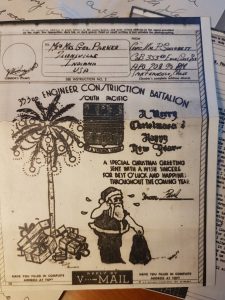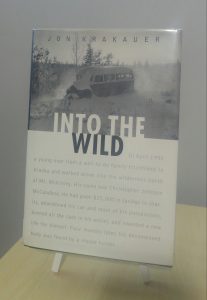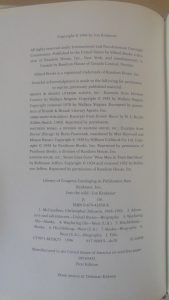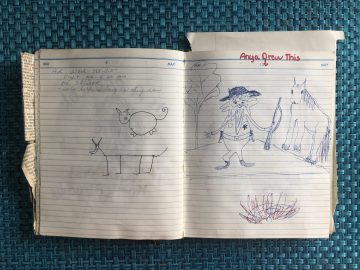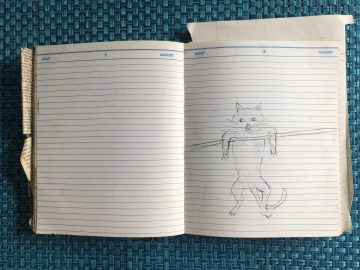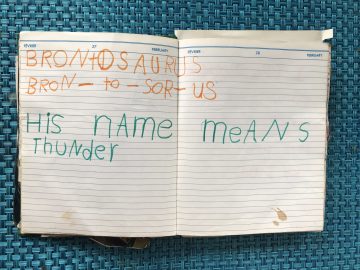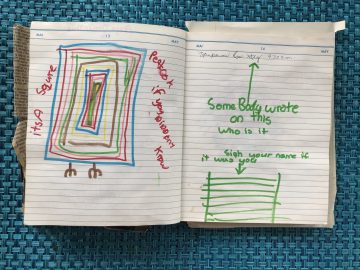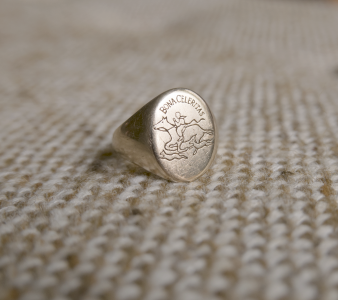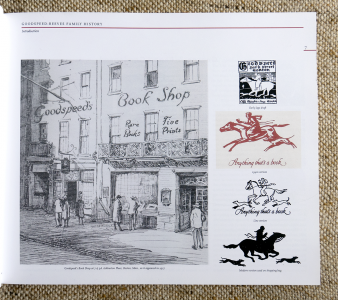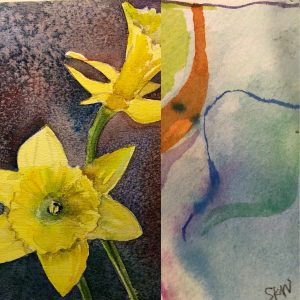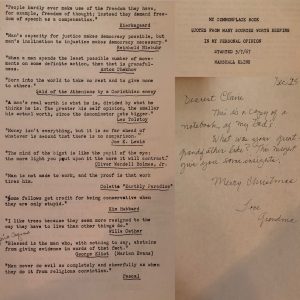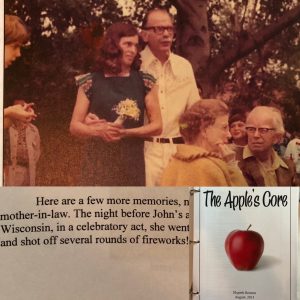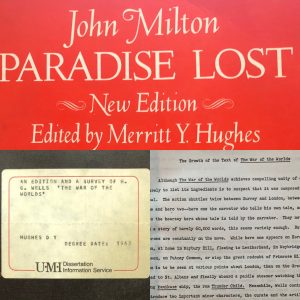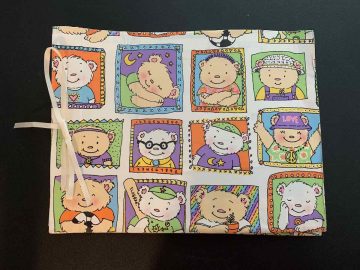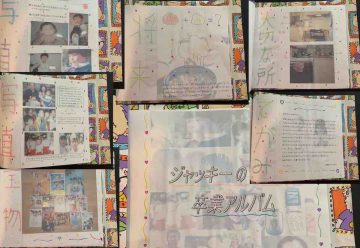Science Literacy Week 2020
Posted on September 18, 2020 @10:23 am by cshriver
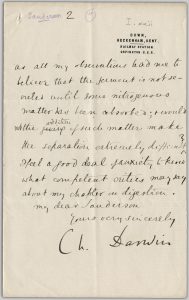
[Letter, Charles R. Darwin to John Burdon-Sanderson, July 16, 1875]. RBSC-ARC-1731-1-22
Darwin-Burdon Sanderson Collection
This collection, which was acquired by Woodward Library in 1966, consists of correspondence between Darwin and physiologist Sir John Scott Burdon-Sanderson from the years 1873-1881. After his medical education at the University of Edinburgh and at the University of Paris, Burdon-Sanderson became a Medical Officer of Health for Paddington in 1856 and subsequently a physician to the Middlesex Hospital and the Brompton Consumption hospitals. Between 1858-1866, he investigated diphtheria, cattle plague, and cholera when they appeared in England. He was one of the forerunners of penicillin, observing its ability to inhibit the growth of bacteria before Alexander Fleming. Burdon-Sanderson was also the first person chosen to be the Waynflete Chair of Physiology in Oxford in 1882. In 1895, he became Regius Professor of Medicine at Oxford, a post he held until his resignation in 1904.
The letters in this collection deal with the research Darwin and Burdon Sanderson did on the digestive powers and leaf movements of insect-eating plants, notably Drosera and Dionaea. Darwin published the results of this research as part of his Insectivorous Plants (1875).
Pearce/Darwin Fox Collection
This collection is made up of family records of the Darwin Fox family, most notably correspondence between William Darwin Fox and his second cousin Charles Darwin. The Reverend William Darwin Fox graduated from Cambridge in 1829 and was appointed vicar of Delamere, Cheshire in 1838, where he remained until his retirement in 1873. Darwin Fox shared his cousin’s passionate interest in natural history. In addition to being a naturalist, he was also an entomologist, with a particular interest in collecting beetles. He is credited as the person who introduced Darwin to entomology and tutoring him in natural history. Fox and Darwin had quite a close relationship, maintaining regular contact through letters. The collection was purchased by Woodward Library in 1970 from Captain Christopher Pearce, a descendant of the Fox family and resident of Vancouver Island.
Both of these collections have been digitized and are available in UBC Library’s Open Collections for your perusal and ejoyment.
Science Literary Week runs from September 21 to 27, 2020. For more details about Science Literacy Week activities at the Library, visit the UBC Library Guide to Science Literacy Week.
No CommentsPersonal library/archives show and tell (VII)
Posted on August 31, 2020 @11:45 am by cshriver
Show and Tell: Selections from our Personal Archives and Libraries
How we remember, and what we hold dear, differs from person to person. All of us have personal archives we keep to preserve memories that are precious, that document our families, our histories and record important events. It could be a simple piece of ephemera we love and cannot part with (a ticket stub from our first concert, for example), or photographs of ancestors that offer clues to our origins, or anything we have set aside and saved for a myriad reasons. Similarly, our personal libraries hold volumes that have emotional value to us, not just for the words contained in it, but as a reflection of a time in our lives, we found them particularly relevant. This could be the first book of poetry that made us fall in love with verse, or the dog-eared copy of a classic novel that led us to our current passion for libraries and library work. This blog series explores selections from the personal libraries and archives of members of the Rare Books and Special Collections team, and other colleagues from UBC Library and beyond. We hope our stories will help you reflect on what is meaningful at this time in your, and in our, collective histories.
— Krisztina Laszlo, Archivist
Eleanore Wellwood, Technical Services Library Assistant, Xwi7xwa Library
I have my grandmother’s recipe book (Helen/Ellen/Nellie Whittington Wellwood, 1883-1969). It probably started life as her mother’s (Emeline/Emily Tuffnell Whittington, 1845-1941). It was never pretty and now is falling apart and the paper is brittle. The reason it is a treasured possession is only because of how one recipe leads off into questions and clues about family history and local BC history and world history and the great unresolved Canadian culinary debate about the origin of Nanaimo bars.
The history of Nanaimo bars is reasonably well documented (according those emergency reference sources, Google and Wikipedia). The earliest documented use of the name “Nanaimo bars” was in the 14th edition of the Vancouver Sun’s Edith Adams’ Cookbook (which UBC Library does not have). Many possible precursors have been proposed. Some even have a connection to Nanaimo and more specifically to a United Church cookbook from Nanaimo. But, as every reference librarian knows, it is hard to search for something without a known name and with nothing but common search terms, so maybe all the precursors have not been found.
My family history is also reasonably well documented but with unasked or unanswered questions. Emeline was born in the Southampton workhouse, a piece of information she did not share. She married William Whittington, a bricklayer from the Isle of Wight, in Chatham, Kent, England in 1868. They converted to Methodism and embraced temperance and proceeded to move north and to have children until ending up in Seascale, Cumberland, where Nellie was born and her father went bankrupt building the Methodist church there. In 1889, Nellie emigrated with her mother and four siblings to join her father and oldest brother, who had emigrated the year before to Victoria. After an interlude in Port Townsend and Port Angeles, they settled into the circle of Methodist, temperance-supporting builders in Victoria with their social life centred on their church. My father’s father, Wilmot Bryant Wellwood (1883-1972), was born in Wingham, Ontario where his family was on an extended visit ‘back home’ returning from a move, with stays, through Peoria, Illinois, San Francisco, New Westminster, Nanaimo, Point Atkinson, and the Naas River and before returning (again via Peoria and San Francisco) to New Westminster, Nanaimo, and, finally, Victoria. My great grandfather had many occupations but his strongest wish had been to be a Methodist missionary. Their social lives also revolved around the Methodist church wherever they lived. The United Church of Canada Archives in Vancouver provides more than enough evidence of both families’ connection to the church and how important its social activities were to young people in the early twentieth century.
My grandparents were neither rich nor poor. They had their share of family difficulties, including the death of both their fathers in 1912 and the ‘sharing’ of both their mothers with other family members for many years. They had four sons, one of whom died at birth in 1917. My grandfather stayed employed during the Great Depression, weathered rationing and the death of one son in World War II, saw two sons through university, married and starting families after the war, supported relatives who had fallen on hard times several times, and ran a precursor of a Bed & Breakfast, leaving them frugally comfortable in retirement in the early 1950s. All of this creates the backdrop for the recipe book.
My recipe book is a book of mysteries. It might have been two books because there is a clump of lined pages with no red margin line still bound together but separated from the binding. Almost all of those pages are blank. There is another clump of pages which are still sewn in and with the red margin line. More of these pages have recipes until about halfway through, when it also goes blank. Together the two clumps seem to be a little too big for the spine binding and yet seem to belong together. There is no apparent organization. There are few dates (included by happenstance) and no page numbers. Like most family recipe books, it is a combination of handwritten recipes and loose and pasted-in newspaper clippings and recipes written on scraps of paper and envelopes. If there ever was an order to these, it is long lost. The handwriting changes, the inks change, some recipes are clearly written by others and some suggest the aging of the writer. There are snippets of things the owner wanted to save – hand copied or cut from a newspaper – now-or-always-corny jokes and inspirational poems and useful recipes for preventing hair loss. There are far more recipes for desserts than anything else. Most of the recipes reflect the limited range of available ingredients and a distinctly British palate.
Following the recipe for Dreamland Cake and before Unbaked Chocolate Brownies, there is a recipe for Chocolate Coconut Bars. In everything but name, it is a Nanaimo bar. My limited paleography skills lead to me to believe that Nellie added the recipe and that it would have been after wartime rationing, but also after her boys had left home, while her handwriting was still firm and steady but before the advent of ballpoint pens – or the early 1950s. It would have been the ideal contribution to United Church social events of the time. But, was it the ideal recipe before or after the christening of the Nanaimo bar? I do not know. All I know is that Chocolate Coconut Bars don’t appear to be one of the precursor names, and Victoria and Nanaimo aren’t all that far apart.
No CommentsSummers past
Posted on August 19, 2020 @3:59 pm by cshriver
Summer 2020 has been a little different then other summers, but in some ways it is like EVERY summer. We are still going to the beach, travelling through British Columbia by car, gardening, boating, having picnics in the park, and spending time with family and close friends. We’ve adjusted for the current situation, keeping our bubbles small, but we are getting out in the sun, and enjoying ourselves with all the usual summer activities. As August comes to an end, and the school year beckons on the horizon, we hope you will enjoy this selection of photographs from summers past.
— Krisztina Laszlo, Archivist
- Race on Bowen Island. UL_1623_0012
- Stanley Park, Second Beach. UL_1639_0015
- Formal on the beach. CC_PH_04303
- Summer road trip. CC_PH_09370_015_018
- Margaret at Big Horn Camp. CC_PH_09370_015_030
- Barbara at Horseshoe Bay. CC_PH_09370_014_041
- Afternoon on the lake. CC_PH_00005
- Jean and Ethel. CC_PH_09370_023_026
- Hammond/Haney Farmers baseball team before second world war. JCPC-30-002
- On the beach at Buccaneer Bay. UL_1625_0004
- A day at the beach. CC_PH_00201
Personal library/archives show and tell (VI)
Posted on August 4, 2020 @4:56 pm by cshriver
Show and Tell: Selections from our Personal Archives and Libraries
How we remember, and what we hold dear, differs from person to person. All of us have personal archives we keep to preserve memories that are precious, that document our families, our histories and record important events. It could be a simple piece of ephemera we love and cannot part with (a ticket stub from our first concert, for example), or photographs of ancestors that offer clues to our origins, or anything we have set aside and saved for a myriad reasons. Similarly, our personal libraries hold volumes that have emotional value to us, not just for the words contained in it, but as a reflection of a time in our lives, we found them particularly relevant. This could be the first book of poetry that made us fall in love with verse, or the dog-eared copy of a classic novel that led us to our current passion for libraries and library work. This blog series explores selections from the personal libraries and archives of members of the Rare Books and Special Collections team, and other colleagues from UBC Library and beyond. We hope our stories will help you reflect on what is meaningful at this time in your, and in our, collective histories.
— Krisztina Laszlo, Archivist
Weiyan Yan, Office, Copying & Shelving Assistant
In her late teens, my mother was a nurse at a hospital in Xi’an city. After she moved to my father’s hometown – a small village on the Loess Plateau – she became a doctor and a midwife. At that time in China, people called this kind of doctor “Barefoot Doctor”. That meant they were farmers but they were also doctors in their spare time. Even I’m not sure about the qualifications. She said that she was “a flagpole pulled out from a bunch of chopsticks”. But as far as I know, she did a very good job, especially at being a midwife. I still remember that she had a red bag for being a doctor. It was the most important thing in our house and we never were allowed to touch it.
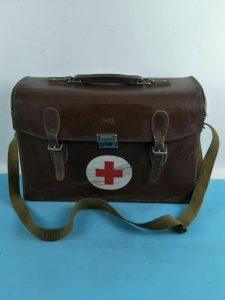
Chinese medicine bag
I don’t know how many patients she had seen, but I know that from late 1950s to late 1990s, she delivered most of the babies in our village, the parents and then their children, except a few that she felt should be delivered in the hospital. She was well respected and she became an older sister-in-law to many people in our village. That was confusing! They called her sister-in-law out of respect, and I called them grandparents or great grandparents because of the hierarchy in our society.
I have many memories from when she was working. In the middle of the crazy, cold, winter night, someone looking for my mother’s help would loudly knock on our front door or back door, or sometimes even both doors; everybody in my family woke up. My mother would take her medicine bag and leave with them right away. Most of the time, she would come back the second morning with a few thin, dry pancakes. I would have a piece of them and squat beside her to watch her washing her rubber gloves. I forget most of the details, and only remember that she turned them over, blew some air in, tied the open side with one hand, and squished with the other hand. It was so amazing to me at that time that the fingers would come out one by one with popping sounds. Sometimes my father might come by and offer to bite my pancake into the shape of a horse – I was born in the year of the horse. I was really happy at first and then cried when there was only a small piece left.
My mother was a city girl. After she moved to the village, she learnt everything about being a farmer, or being a woman on a farm. She spun, wove, made clothes and shoes for us. But the soles that she made were never good. She used a hammer to make them flat on a piece of stone.
I was proud of my mother, but not always. When she came to our school for the immunizations, I was always the first one to get an injection in order to set a good example for the other kids, even though I was also very scared. When she dressed up and played a bad woman on stage, I was so embarrassed in front of my friends. I wanted her to play a hero. But I never discussed that with her. I was a good girl at that time.
My mother has been gone for many years. Each time when I’m thinking of her, I always picture her with her red medicine bag, coming to me with a smile.
Natalie Trapuzzano, Student Archives and Reference Assistant
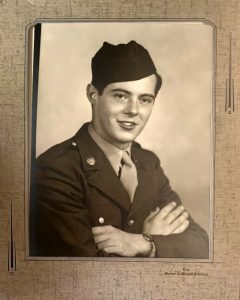
Stushie’s headshot in uniform.
I can say without any hint of humor or irony that one of my best friends is a ninety-three-year-old man. My great-uncle Stushie (Stanley, if you’re being stern) is my hands-down favorite person. A proud WWII veteran, history buff, perennial jokester, and armchair Jeopardy champion, he’s been the most consistent and inspiring man in my life. Even though he was a high school dropout, he’s the most intelligent and well-read person I know and always encouraged me to work toward the same. He bought me annual subscriptions to National Geographic and Smithsonian Kids magazines until I got old enough for the “adult” versions that he still sends me today—and no one leaves his house without a bag full of random items to go. He’s a bit of a packrat and his favorite topic of discussion is his experience in Europe during WWII, so he’s given me a lot of his military-related photos and ephemera over the years. He recently had to move to an assisted living facility, and I’ve been worrying about him a lot because of the pandemic’s impact on seniors in the United States, so it’s nice to have some of his treasures around while I can’t be with him in person.
- Some snapshots from his time in Europe. Notations on the back: “Some more clowning around” (left); “Me, standing on an AA Gun with what’s left of the Propaganda Ministry in back” (right).
- A canvas pouch that was part of his military uniform, as well as a compass and his personalized stamper that were carried within it.
- A ring bearing the symbol of the 78th Infantry Division from his time in Berlin & a hand-poked ring his brother Leonard traded a pack of cigarettes for while stationed in Africa during WWII.
- A page from his military diary, begun June 8th, 1945.
- One of our favorite pastimes: making the other person draw increasingly ridiculous pictures.
- Natalie and Stushie
No Comments
Personal library/archives show and tell (V)
Posted on July 27, 2020 @4:31 pm by cshriver
Show and Tell: Selections from our Personal Archives and Libraries
How we remember, and what we hold dear, differs from person to person. All of us have personal archives we keep to preserve memories that are precious, that document our families, our histories and record important events. It could be a simple piece of ephemera we love and cannot part with (a ticket stub from our first concert, for example), or photographs of ancestors that offer clues to our origins, or anything we have set aside and saved for a myriad reasons. Similarly, our personal libraries hold volumes that have emotional value to us, not just for the words contained in it, but as a reflection of a time in our lives, we found them particularly relevant. This could be the first book of poetry that made us fall in love with verse, or the dog-eared copy of a classic novel that led us to our current passion for libraries and library work. This blog series explores selections from the personal libraries and archives of members of the Rare Books and Special Collections team, and other colleagues from UBC Library and beyond. We hope our stories will help you reflect on what is meaningful at this time in your, and in our, collective histories.
— Krisztina Laszlo, Archivist
Susan Parker, University Librarian
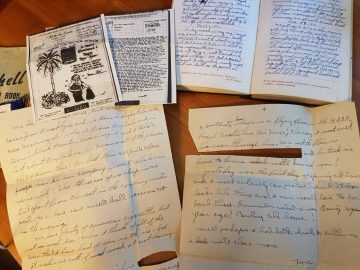
V-mail form and censored letters
When I was growing up, I knew my father had been in the U.S. Army in Papua New Guinea during World War II. Like many veterans of that war, he seldom spoke about it, and usually it was only when he was indisposed with recurring symptoms of malaria, which he contracted there. He died suddenly, a few months after I graduated from college, and only then did I learn more from my mother. She told me that Dad was in the Army Graves Registration Service. His team retrieved Allied soldiers’ remains, identified them, and buried them there in the jungle until they could be sent home.
What’s included here are letters to my dad, some from his father and some from his mother, from summer, 1944. There are also letters home from my dad to them, mostly from 1942 and 1943. Some of my dad’s letters are hand written, including those with portions of them cut out by censors. Most are typed on Army forms called V-mail.
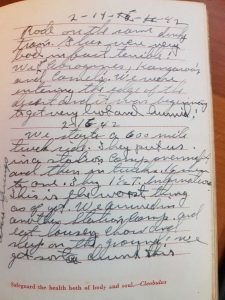
Emmett Parker diary
There are two diaries here, one provided to soldiers by the Army and one is just a blank notebook. My dad enlisted on December 8, 1941, the day after Pearl Harbor. His diaries detail his deployment with the 808th Engineer Aviation Battalion from San Francisco by boat to Melbourne, Australia, and by train and truck through the Australian desert to Darwin, and from there, to Port Moresby, New Guinea. He spent most of the war on the opposite side of that island, at Camp Pine Creek, near the village of Buna.
The Engineers were sent to New Guinea to build desperately needed airstrips for Allied bombers. A small and heavily folded map from the time is included; my dad must have kept that to show at home after the war. One of his diaries details his survival through the Battle of Buna, a grisly and costly fight for both sides, lasting from July 1942 until January 1943, when U.S. and Australian air and land troops finally defeated the Japanese occupation of New Guinea.
You’ll also see here two uniform patches. These designate the Second Service Command. I don’t know much detailed information about these decorations or Dad’s rank (Corporal); his service records were among the thousands that were destroyed in the NARA Military Archives fire in 1973. I can identify three medals designated by the ribbons here. On the left is the Defense Service Medal with three stars, one for each year of combat deployment. In the middle the Asiatic-Pacific Campaign medal designates his South Pacific service, and the red ribbon on the right is a Good Conduct medal, also reflecting three years of active service or more.
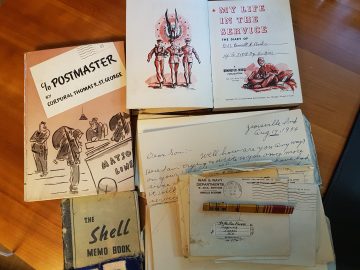
Uniform patch (right) and “c/o Postmaster” book (left)
There’s also a book, c/o Postmaster, which my dad relished as a reminiscence of another soldier’s Army experiences while serving in Australia.
These letters, correspondence between my dad and his parents, are a link to my grandfather, who I never knew, and a window into my grandparents’ life on the home front in rural Zionsville, Indiana with my dad’s 15-year-old brother and their newly-married older sister.
This little collection is a vivid connection to my dad’s World War II experiences, giving me a small window into what he lived through and the gruesome job he performed. I had the good fortune to travel to Australia last year. Although I did not get to New Guinea or to Darwin, my dad’s favorite Australian town to visit while on liberty, it was meaningful to me to be there. I spent several days in Melbourne last summer with thoughts of him and the war.
Personal library/archives show and tell (IV)
Posted on July 20, 2020 @4:58 pm by cshriver
Show and Tell: Selections from our Personal Archives and Libraries
How we remember, and what we hold dear, differs from person to person. All of us have personal archives we keep to preserve memories that are precious, that document our families, our histories and record important events. It could be a simple piece of ephemera we love and cannot part with (a ticket stub from our first concert, for example), or photographs of ancestors that offer clues to our origins, or anything we have set aside and saved for a myriad reasons. Similarly, our personal libraries hold volumes that have emotional value to us, not just for the words contained in it, but as a reflection of a time in our lives, we found them particularly relevant. This could be the first book of poetry that made us fall in love with verse, or the dog-eared copy of a classic novel that led us to our current passion for libraries and library work. This blog series explores selections from the personal libraries and archives of members of the Rare Books and Special Collections team, and other colleagues from UBC Library and beyond. We hope our stories will help you reflect on what is meaningful at this time in your, and in our, collective histories.
— Krisztina Laszlo, Archivist
Stephanie Plumb, Library Services Assistant – Records Management
I can trace my journey from Arizona to British Columbia back to a single, defining moment: when I purchased a copy of Into the Wild by Jon Krakauer in 2007. The book cover looked interesting, and advertised that it had been made into a feature film. As I devoured the story of Chris McCandless, a 20-something year old who goes off the grid to connect with nature and journey to Alaska, all of my Thoreauean sensibilities were awakened and I knew I had to follow in suit. I quit my job, packed my car, and set out for a 3-month long road trip from Phoenix to Talkeetna, Alaska. There, in the shadow of Denali, I met my future Canadian husband at a local hostel. The same story had inspired him to travel to Alaska. Five years later, after much city-hopping, backpacking, and immigration paper filing, I landed in Kelowna as a Canadian permanent resident. In 2014, I was gifted this first-edition copy of Into the Wild, which holds a place of honor on my bookshelf. Though many years have gone by and I have learned how to temper my wanderlust, when I hear Eddie Vedder crooning “Big Hard Sun” from the Into the Wild soundtrack, I look off to the horizon, aware of the itch in my feet.
Personal library/archives show and tell (III)
Posted on July 13, 2020 @3:27 pm by cshriver
Show and Tell: Selections from our Personal Archives and Libraries
How we remember, and what we hold dear, differs from person to person. All of us have personal archives we keep to preserve memories that are precious, that document our families, our histories and record important events. It could be a simple piece of ephemera we love and cannot part with (a ticket stub from our first concert, for example), or photographs of ancestors that offer clues to our origins, or anything we have set aside and saved for a myriad reasons. Similarly, our personal libraries hold volumes that have emotional value to us, not just for the words contained in it, but as a reflection of a time in our lives, we found them particularly relevant. This could be the first book of poetry that made us fall in love with verse, or the dog-eared copy of a classic novel that led us to our current passion for libraries and library work. This blog series explores selections from the personal libraries and archives of members of the Rare Books and Special Collections team, and other colleagues from UBC Library and beyond. We hope our stories will help you reflect on what is meaningful at this time in your, and in our, collective histories.
— Krisztina Laszlo, Archivist
Barbara Towell, E-Records Manager, University Archives
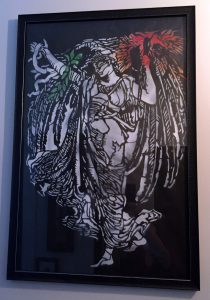 In 2013 my apartment building in Mount Pleasant was sold and the fate of the occupants was in peril. The building was full of long-term tenants enjoying relatively inexpensive rent and now it seemed certain that we would be evicted, our apartments renovated, and the rents tripled. One evening, my partner and I noticed the appearance of a sandwich board in front of the building that seemed to be advertising a shop or service of some kind. For a few hours in the evening, it would show up, then disappear, only to reappear the following evening. This continued for a week or two. It contained no words, only the image of an oddly familiar angel with an outstretched arm gesturing toward our building. I tried to understand what it was advertising. After obsessing over where I had seen that winged creature before, I recalled a class I had taken during my undergrad and after a bit on time on the internet I realized that this image was a reference to a woodcut by Walter Crane called “To the memory of the Paris Commune” (1871), which memorializes the death of thousands of Communards killed by the French army. The sandwich board seemed to signal a dim future for the tenants occupying our, and so many other, rental buildings across Vancouver. Then as quickly as it appeared, it vanished, and I never saw it on the sidewalk in front of the building again.
In 2013 my apartment building in Mount Pleasant was sold and the fate of the occupants was in peril. The building was full of long-term tenants enjoying relatively inexpensive rent and now it seemed certain that we would be evicted, our apartments renovated, and the rents tripled. One evening, my partner and I noticed the appearance of a sandwich board in front of the building that seemed to be advertising a shop or service of some kind. For a few hours in the evening, it would show up, then disappear, only to reappear the following evening. This continued for a week or two. It contained no words, only the image of an oddly familiar angel with an outstretched arm gesturing toward our building. I tried to understand what it was advertising. After obsessing over where I had seen that winged creature before, I recalled a class I had taken during my undergrad and after a bit on time on the internet I realized that this image was a reference to a woodcut by Walter Crane called “To the memory of the Paris Commune” (1871), which memorializes the death of thousands of Communards killed by the French army. The sandwich board seemed to signal a dim future for the tenants occupying our, and so many other, rental buildings across Vancouver. Then as quickly as it appeared, it vanished, and I never saw it on the sidewalk in front of the building again.
A maquette of the work made a reappearance some time later at an impromptu art sale held in the building’s lobby. While I was sad about what was happening to the tenants of my building, and obviously, our destiny was nothing compared to what the actual Communards received in 1871, I was excited to see a maquette of the sandwich board for sale and to learn who had created it. I bought the work, and this may have been the artist’s first sale, as he seemed both embarrassed and uncomfortable with the transaction. When asked, he was unable to tell me the price. After a few uneasy seconds, I made an offer which caused him to shift in his seat, but he accepted. The image is by Colin Fraser, spray paint on paper [81 x 51 cm]. It is from a time when I knew the names of all my neighbours. The sandwich board’s nightly position on the sidewalk did nothing to undermine our certain eviction, but nevertheless represented resistance, and one tenant’s silent nightly protest.
Krisztina Laszlo, Archivist
My parents were refugees of the Hungarian Revolution, and struggled in different ways to adjust to life in Canada. They left for different reasons; my dad because he took part in the resistance, and to stay would have meant severe repercussions and possible death. My mom left when her best friend suggested they join the stream of people heading for the Austrian border. Toiling in the soviet factory system together did not seem palatable when there was a glimmer of hope in escaping to the promise of a better life. My parents met on Vancouver Island, part of a small community of Hungarian refugees adapting to the culture in Canada, learning English, and establishing new roots. We did not have much growing up, and out of both preference and necessity, we raised or grew most of our own food. We even made soap out of pig fat! My dad worked in construction, and doing odd jobs, while my mom with only an education to age 14, mainly took cleaning jobs so she could buy the extra things we could not make ourselves. For much of my early childhood, she would leave five nights a week to an office building in downtown Victoria. This job meant an endless supply of craft and art supplies. She would bring home old file folders, expired diaries and ledgers, and other discarded detritus that was much prized for my many creative projects.
One item I still have from this period is a 1975 hardbound appointment book that had seen minimal use by its original owner. I filled the pages with my childhood scribbles and drawings, practiced my printing and pasted in and collaged images cut out from old magazines. What makes the book precious to me now is that it also contains a few sketches by my anya (“mom” in Hungarian), that I have a clear memory of asking her to do. My favourite is a pencil sketch of a cat hanging off a pole, based on the classic 1970s “Hang in there” imagery. And that is what she did, she hung in there and gave me the opportunity to have a life free of the challenges she faced. She died in 2019, but I am forever grateful for this reminder of her strength and endurance.
Show and tell with the RBSC team, part II
Posted on July 6, 2020 @5:16 pm by cshriver
Show and Tell: Selections from our Personal Archives and Libraries
How we remember, and what we hold dear, differs from person to person. All of us have personal archives we keep to preserve memories that are precious, that document our families, our histories and record important events. It could be a simple piece of ephemera we love and cannot part with (a ticket stub from our first concert, for example), or photographs of ancestors that offer clues to our origins, or anything we have set aside and saved for a myriad reasons. Similarly, our personal libraries hold volumes that have emotional value to us, not just for the words contained in it, but as a reflection of a time in our lives, we found them particularly relevant. This could be the first book of poetry that made us fall in love with verse, or the dog-eared copy of a classic novel that led us to our current passion for libraries and library work. This blog series explores selections from the personal libraries and archives of members of the Rare Books and Special Collections team, and perhaps other colleagues from UBC Library and beyond. We hope our stories will help you reflect on what is meaningful at this time in your, and in our, collective histories.
— Krisztina Laszlo, Archivist
Hiller Goodspeed, Circulation, Copying and Shelving Assistant
My family’s relationship with my dad’s family has always been a strained one. I know and have met many relatives, but we don’t have a relationship that has continued into my adulthood. In my early 20s, I wanted to work on this, so I connected with various uncles and cousins of mine. My “Uncle Roger” (technically a 2nd cousin) reached back and we began what is now a real friendship.
Uncle Roger is a jack of all trades…to be honest the term “renaissance man” is more fitting, even if embarrassingly so. He’s an experienced architect and lawyer, as well as the family historian. He collects books, art, posters and has lined the walls of his home with framed materials. He also has an antique printing press and darkroom in the basement of his suburban home in New York state. He’s a guy who knows things – weird things and odd facts about a wealth of different topics.
I was delighted at Roger and my burgeoning friendship because I could finally ask someone questions about my family history, in particular one I had about signet ring I inherited from my Grandfather. The inscription on the ring reads “Bona Celeritas” (translated “Good Speed”) and the symbol of a monk reading on horseback. As it turns out, the symbol was taken from Goodspeed’s Book Shop, a preeminent rare bookseller that operated in the Boston area from 1898 to 1995. I learned that familial relations to the bookseller Charles E. Goodspeed are tentative at best, but it could be assumed that we are all descendants of the Roger Goodspeed, who arrived in the Plymouth Colony in 1637.
- Edward G. Goodspeed’s signet ring
- Excerpt from “Goodspeed-Reeves Family History”, self-published by Roger Goodspeed in 2015.
Claire Williams, Forestry Archivist
I have always loved learning about my grandparents; hearing stories about their families and their lives. Perhaps this was partly due to a set of bedtime stories my Grandmother recorded for my sister and me to listen to while we fell asleep when we very young. I can see the audio-cassettes in my mind, translucent plastic with colorful tape, carefully labeled in my Grandma’s neat penmanship. I don’t know what happened to those cassettes, they may have burned in a house-fire my family had when I was 10. However, I do have a few treasures I’ve collected over the years. It may be my natural inclination to acquire and preserve the records of the past, and pour over the stories they contain, that led me to want to be an archivist. Here is a sample of some of my grand-parents’, great uncle’s, and great-grandparents’ records I’ve held onto.
- Two watercolour paintings made by my Grandmother, Shirley Kline Williams.
- A book of quotes my Great-Grandfather kept which my Grandmother Shirley photo-copied for me.
- A 3-ring binder containing my Grandma Elspeth’s memoirs, replete with photographs and stories from her life.
- My Great-grandfather, Merritt Hughes’, edition of Paradise Lost, and my Great-Uncle, David Hughes’, thesis on The War of the Worlds’.
No Comments
Show and tell with the RBSC team
Posted on June 29, 2020 @3:22 pm by cshriver
Show and Tell: Selections from our Personal Archives and Libraries
How we remember, and what we hold dear, differs from person to person. All of us have personal archives we keep to preserve memories that are precious, that document our families, our histories and record important events. It could be a simple piece of ephemera we love and cannot part with (a ticket stub from our first concert, for example), or photographs of ancestors that offer clues to our origins, or anything we have set aside and saved for a myriad reasons. Similarly, our personal libraries hold volumes that have emotional value to us, not just for the words contained in it, but as a reflection of a time in our lives, we found them particularly relevant. This could be the first book of poetry that made us fall in love with verse, or the dog-eared copy of a classic novel that led us to our current passion for libraries and library work. This blog series explores selections from the personal libraries and archives of members of the Rare Books and Special Collections team, and perhaps other colleagues from UBC Library and beyond. We hope our stories will help you reflect on what is meaningful at this time in your, and in our, collective histories.
— Krisztina Laszlo, Archivist
Jacky Lai, Archives and Circulation Assistant
During my final year in high school I created a graduation scrapbook for my Japanese language class. The scrapbook documented the 5 W’s of my life back then – where, who, when, what, why. Some of the highlights include my favourite places (kitchen and karaoke), my favourite pop group, a letter to my parents, my goals, a selection of Japanese syntax homework, yearbook messages from my classmates written in Japanese, and adorable childhood photographs (if I do say so myself). It is always fun and nostalgic flipping through this scrapbook (and a good opportunity to brush up on my Japanese).
Chelsea Shriver, Rare Books and Special Collections Librarian
I would like to start by stressing that I am, by and large, a law abiding citizen. I do not typically indulge in either vandalism or property destruction. But I do happen to have about a foot and a half of wallpaper that was…liberated? preemptively salvaged? preserved for posterity at knife point?…from the dorm of my undergraduate institution. I attended a small liberal arts college in New England (I’ll withhold names until the statute of limitations has passed) where the dorm or “house” system was very important. You ate all meals in your house, you attended Convocation and other all-campus meetings (at which you performed your house cheer) with your house, and you went through Commencement with your house. It was quite common to live in the same house all four years, as I did.
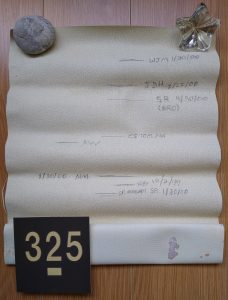 My last year of undergrad, I lived in (you guessed it!) room 325 of this particular house. I can’t quite recall how it started, but I believe there was an argument between two very petite friends of mine over which was taller, and the shorter of the two was having trouble admitting defeat. Since seeing is believing, measurements were made against the wall outside of my room and marked in pencil. Over the months of that final year, other friends and family were measured. By Commencement day, we had amassed a little collection.
My last year of undergrad, I lived in (you guessed it!) room 325 of this particular house. I can’t quite recall how it started, but I believe there was an argument between two very petite friends of mine over which was taller, and the shorter of the two was having trouble admitting defeat. Since seeing is believing, measurements were made against the wall outside of my room and marked in pencil. Over the months of that final year, other friends and family were measured. By Commencement day, we had amassed a little collection.
A year after I graduated, I came back to campus to attend the graduation of a good friend (RG, one of the two original height disputants). We went to visit the old dorm, and learned that it was soon to undergo a complete renovation / redecoration. I’m *pretty* sure there was already some preparatory work visible on the walls, which gave us inspiration and courage for what we were about to do, but that may just be a guilty conscience trying to soothe itself. We went up to visit my old hallway, and there were the height markings, just as we had left them. They were going to be replacing the wallpaper anyway, we reasoned. It was clear from the work they had already started. Someone (not me!) produced a pocket knife. It was all done surprisingly quickly and easily. We rolled up the strip of wallpaper we had liberated / salvaged / preserved, and at the last minute, someone (okay, it was me this time) gave the plastic number plaque outside of my old room a good, sharp yank (I mean, in for a penny…). All that to say, memory and nostalgia are very, very powerful forces. They can even turn a venerable college ceremony into a heist and the mildest of future librarians into a scofflaw.
No CommentsFive favourite fairy tales, part XII
Posted on June 5, 2020 @4:32 pm by cshriver
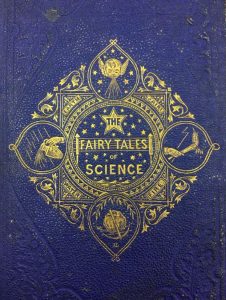
“The Fairy Tales of Science” ( PZ6 1866 .B76)
Thank you for joining us for this week’s Friday fairy tales blog post!
Even though the Rare Books and Special Collections reading room is currently closed, we’ve been excited to share over the past couple of months the delightful results of a student assignment undertaken during the winter 2020 term for the English course “The Victorian Fairy Tale: Text and Image”.
For this assignment, Professor Pamela Dalziel asked her students to “choose five illustrated Victorian fairy tales available in Rare Books and Special Collections that you would like to have in your personal collection.” Some of Professor Dalziel’s students were kind enough to share their final selections with the public through the RBSC blog, some anonymously and some with author credit.
These two will likely be the last student assignment we’ll be sharing through the blog, and we hope you have enjoyed them as much as we have! Be sure to read all of the fairy tale assignments shared by Professor Dalziel’s students and stop by RBSC to see some of the books for yourself once the RBSC reading room has reopened.
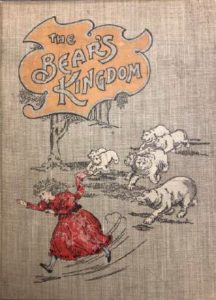
“The Bear’s Kingdom” (PZ6 1897 .R644)
Five fairy tale selections, part XII:
- Science fairy tales, Turkish fairy tales, delightful nonsense, fairy mythology, and water-babies
- Wymps, heroes, bears, pink fairies, and peeps into fairyland
No Comments
